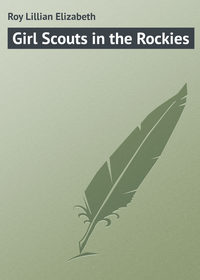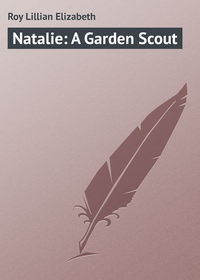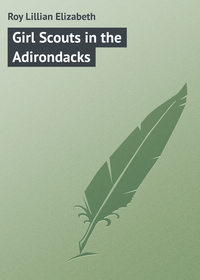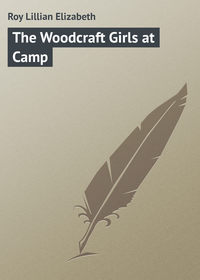 полная версия
полная версияThe Little Washingtons' Travels
"Don't let us ever travel that way again! It's awful!"
"But think of the millions who have to travel that way, up to the Bronx or Washington Heights, or over to Brooklyn. There is no other way to get there except by foot, or paying several car-fares for changes of line," said Mr. Davis, who seemed thoroughly acquainted with conditions in New York.
However, the children forgot the annoyance of travel the moment they found the small steamer "Liberty Island" at the wharf. They all hurried on board, and were danced over the choppy waves of New York bay. On the sail over to the statue, they saw Ellis Island where the immigrants landed, Governor's Island of Revolutionary fame, the heights of Brooklyn just on the edge of the water, and then were landed at Liberty Island.
Troops were quartered here, and everything was under military discipline. Visitors were still permitted to the tower, but no one was allowed to go about the camps, or to question the men.
The elevator landed the children high up where the balcony encircles the statue, but Mrs. Parke declared that they were not going to mount the steep and winding stairs, as nothing was to be gained by climbing up the hundreds of steps. The view from the balcony was the same as up in the head.
As they walked around the outside of the figure, Mr. Parke told the children some interesting items about the statue.
"Bartholdi's statue named 'Liberty' was presented by the French people to the United States in 1885. It is the largest statue ever built. It was conceived by the famous French sculptor whose name it bears. It is said that the face is a likeness of his mother, who was his model for this renowned figure.
"It took eight years to construct the statue, and it weighed, when completed, 440,000 pounds. Of this, 146,000 pounds is copper and the balance iron and steel. The latter two metals were used to construct the skeleton framework of the inside.
"The mammoth electric light held aloft in the hand of this giantess is 305 feet above tide-water. The height of the figure is 152-1/2 feet; the pedestal is 91 feet, and the foundation 52 feet, 10 inches. Forty persons can stand at the same time in the top of the mighty head, which is 14-1/2 feet in diameter. The index finger of the hand is eight feet long, and the nose three and three-fourth feet. The colossus of Rhodes – once regarded as a world-wonder for its great size – is a pigmy in comparison with this figure."
The children listened to these stupendous figures, that gave them a good idea of the great work done on Liberty Statue, and were all the more interested in seeing the giant steel beams and bolts that held up the skeleton of the figure.
After they had gone down again and were walking about the base, while waiting for the return of the steamer to convey them back to New York, they listened to Mr. Parke describing the method of lighting at night, so that the entire statue seemed bathed in light. They looked at the great globes of electric lights grouped at various points of the stone parapet, and wondered at the unseen power that would reflect such brilliant illumination up at the figure as to make it plainly visible for miles across the sea.
On the sail back, the children saw the old fort where prisoners were kept herded together in great masses when the British took possession of New York and Long Island.
The Aquarium was visited, and after admiring the strange and beautiful fish in the glass tanks, the children found great sport waiting for the sea-lion to utter his fearful roar, as he flopped into the large tank of water, scattering water in every direction and thoroughly sprinkling the unwary who stood too near the railing.
Then Mr. Parke led his party across Battery Park to a triangular green.
"Who knows what this is?" asked he.
"Why, it's another stairway to the subway cellar," said Martha, who spied the sign over the entrance.
The ladies laughed, for they knew the right answer to the question; but the children had not the slightest clue to it.
"This is Old Bowling Green. Here the Dutch used to meet daily and play bowls, while the wives and children sat on the rude wooden benches placed on the outside and chatted or watched the game."
"Are there any more old places like this in New York?" asked John.
"Yes, I thought we might go over and visit the place called 'Ye Olde Taverne,' that has been carefully kept from mercenary realty investors all these years. There you will find the quaint old style of building in vogue during the time of Howe's victory over the American forces in New York. If the old beams and wood could but talk, what interesting tales of treason, patriotism, plotting and celebrating, it could tell us.
"As we will be right near the Stock Exchange after we leave Fraunces' Tavern, I will see if it is possible to have you visit and watch the buying and selling that goes on in the 'pit' every day. The Exchange closes at three, so we must not delay, if we would visit this scene."
The children followed eagerly as Mr. Parke led the way across Broadway and down lower Pearl Street to the quaint old gable-roofed building still intact after all these years. They gazed wide-eyed at this relic of Washington's period, and felt that the hero of their readings and play was very real indeed.
Coming out on Broad Street, they then went to the Stock Exchange building, but Mr. Parke discovered that no visitors were admitted there since war was declared. Only those known to be in business on the stock market were permitted to enter.
CHAPTER III
SIGHT-SEEING IN NEW YORK
"Well, as long as we can't visit the Stock Exchange, we may as well stop at Wall Street and see the Subtreasury and Old Custom House."
Mr. Parke's suggestion met with approval, so they all followed him up the wide street known as Broad, passing the curb brokers, as they stood screaming and gesturing at each other.
"Oh, don't go so close to that street fight, uncle!" called Anne Davis, tugging at Mr. Parke's sleeve.
"What's the matter there, father? Is some one killed?" worried George, watching the mob anxiously.
"No, they are merely shouting out prices, or dealing in stocks. These are called curb brokers, because they have no 'seats' in the Exchange and cannot deal in there," said Mr. Parke.
"Do any of you children know why Wall Street has its name?" asked Mrs. Davis.
"I suppose because it does a wall of money business every day," ventured Jack, trying to be wise.
"No, it was Wall Street long before any stock market was founded in New York. It had a high, long wall crossing here from the East River to West Street, and back of this wall stood an old Dutch Colonial house, with fine orchards about it. So solid was this wall that the conflicting armies of the British and American sides found it very convenient for a refuge and protection. Then, too, when some old Dutchman or alien of New Amsterdam – for it was so called by the discoverer of the island, Hendrik Hudson, in 1609 – wanted to designate a certain district of the town, he would say 'in front of the wall', or 'so-and-so distant from the wall,' until it began to be known as 'The Wall.' Then the lane that ran in front of it was becoming quite a thoroughfare, as so many people had to go about the area of land enclosed by the wall, that it gradually became known as 'Wall Street.'"
This information was very interesting to the children, and Mrs. Parke said: "Tell them about the purchase of this island."
"The land on which New York stands to-day was secured from the Indians for $24.00 worth of beads and trinkets in 1626, although the island was found by Hudson in 1609 on his voyage of discovery along the bay and up the Hudson River.
"In 1664 the English took it from the Dutch and changed the name to New York after the English nobleman. When Howe took it from Washington's army, his men were so reckless in their merry-making that fire broke out in a tavern down here and soon the wooden houses, with their dried-shingle roofs, were blazing. In that fire more than a thousand buildings were destroyed, and the fine old mansions of lower New York, then the fashionable section of Dutch and English wealth, were razed to the ground. The few places escaping the conflagration were those below this fire-line, or the homes better protected by owners, who kept a bucket-brigade at work to thoroughly soak the outside of the buildings."
"Now that we have seen the sights on Wall Street, what else can we see downtown?" asked Jack.
"Well, we can visit the old church here at the head of Wall Street, and then we can also visit the graveyard of the old church standing on the corner of Fulton and Broadway. Here we will find old flat stones marking graves made before the days of the Revolution; and some of the famous men we read about are buried in this busy section of lower New York. That will fill in our time until we start back uptown to the hotel," said Mr. Parke.
So the children wandered about the grass-covered burial spot, where centuries ago funerals of great men were held, and now old stones still showed the spots where they had been laid to rest.
So completely worn out were they from that well-filled day of sight-seeing, that all were ready for bed soon after dinner that evening. When Mr. Davis came in from a late business conference, no one felt like talking of the day's exploits.
Mr. Parke was to attend to his business the following day, and Mr. Davis offered to act as official guide to the party. John was sent uptown to his great-aunt in a taxicab and told to be sure and be on hand by ten the next day.
"What shall we visit to-day?" asked Mr. Davis, when all the travellers had gathered about the breakfast table in the morning.
"You know best – we want to see the forts and the places where they show things left by Washington," said George.
"I have been thinking that we may as well keep right on visiting from downtown up, taking in important points of interest on the way," suggested Mrs. Parke.
"We can. Then we ought to go down to City Hall Park and take in the sights from there on," replied Mrs. Davis.
The moment John arrived – which was fifteen minutes before the time set – they started out on their second day's trip.
At Old City Hall, with its park of ten acres, they saw the county court house, the Old Post Office and the famous Woolworth building, said to be the tallest in the world. Finding they could visit the tower, they all went up in an elevator and had a bird's-eye view of the great city, with its great ribbons of river winding along on two sides of it, forming the island of Manhattan, where East and North rivers met.
They saw the buildings where the New York World, The Tribune, The Sun, The Mail, and other papers were printed, and Mr. Davis secured permission for them to visit the plant in the Tribune building, so the children could watch the interesting process of turning out a daily newspaper.
After this, they went to the Hudson Tubes Terminal building and had luncheon at the restaurant before walking down the incline of Fulton entrance to the concourse underground. The very fact that so much business went on continually underground, while other business continued above on the streets, filled the children with amazement.
They saw the trains of the New York terminal come in and go out again, and were told how the tubes under the Hudson River had been built and were now conducted.
As a crowded train left the platform, Jack sighed: "The same old thing as in the subway. Not half enough seats for the crowds of people that travel. When we run our line we will see that every one who pays full price has a seat, or they won't have to pay but half fare."
"Your plan is most sensible, but no monopoly will ever consent to lose half a nickel that way while it can get full fare out of the travelling public that must reach certain destinations in a given time," replied Mr. Davis.
From the Hudson Tubes the visitors followed their guide crosstown again, and after walking a few blocks they again crossed City Hall Park. Here they entered the large Municipal building that stands near the entrance to Brooklyn Bridge.
"I think it would be a treat to take you over the bridge on a trolley car. As we cross I can explain all about the great cables that suspend this tremendous structure."
The children eagerly consenting, they were soon seated in a Flatbush trolley, Mr. Davis explaining during the ride the many interesting facts of the old Brooklyn Bridge structure.
In Brooklyn, Mr. Davis showed them in passing, the City Hall, and as they passed down the streets so similar to the busy thoroughfares of New York, Anne said:
"I don't see why they changed the name of these two towns; they are just alike and ought to be called by the same name."
"They tried that some years ago," replied Mrs. Parke. "This is all known now as Greater New York, but we are now on the Brooklyn section of it, while on the other side of the river it is known as Manhattan. Then there is the Bronx section, and the Washington Heights or Van Courtlandt sections."
On the way through Flatbush the children saw a number of genuine old houses, still standing since the time of the occupation of Long Island by the British.
"It is no wonder the American army was overpowered here by General Howe," remarked Mrs. Davis. "The British had more than 30,000 men in its army and navy – all well-trained soldiers, with plenty of food, clothing, and camp equipment to keep them in good trim. Poor Washington had only a scattered force of less than 11,000 men, with scant rations, ragged clothes, no beds or tents for half of them, and constantly having to go from one spot to the other to defend that point."
"Yes, and when we remember how badgered the Americans were, by not being sure where the English would strike first – landing on Staten Island as they did, and swarming in their fleet of battleships, transports, sloops-of-war and floating batteries of guns up the East River, along the Hudson and about the bay so that it would have taken a dozen armies to keep watch of their many maneuvers," added Mrs. Parke.
"Then when Howe so arranged his army that one regiment threatened from one side, another from another side, and the main army from the rear, what were the Americans to do but fight or give up?" said Mr. Davis, while the children listened eagerly to this history, which was very real when on the ground of the scenes.
"Had it not been for that master-stroke of Washington's, when he had but one tiny hope left to save his men – retreat and move over the East River during the heavy fog, what might have been the final result of that war? When we think of the way he handled that great army of sick, hungry, weary and wounded men, discouraged and broken-spirited as each one was, and inspired them with enough will-power and patriotism to brace up and start in absolute silence and under cover of the fog, to cross the deep and dangerous current of the river on flat-bottomed boats, we, at this late day, but faintly feel the great praise due him; and to think that not one man was lost or injured in that transport work!"
"It must have been a terrible blow to Howe, when he discovered his birds all flown in the morning and no one knew how or when!" Jack chuckled in hearty enjoyment.
"I wish I had been there to laugh in his face!" declared George.
"Huh! You wouldn't have laughed long or very loud – he would have clapped you in irons and thrown you into one of those wet, filthy, dark holes he used for the American prisoners!" said John.
"Well, even if I wasn't at the battle scene of Long Island, I would have loved to stand in front of the Old City Hall on Wall Street on that Fourth of July, 1776, and listen to Washington read from the balcony the Declaration of Independence to his army. How that must have cheered them up and made them willing to fight all England!" said George, with emphasis.
Mr. Davis hired an automobile when the party reached the end of the Flatbush ride, and took the children to Gowan's Cove, to Wallabout Market, which used to be called "Walla Bouche" by the Walloons, who settled this section of Brooklyn. They also passed the Gowanus Canal of historic fame, and many other places, stopping at Fort Hamilton to be able to see Governor's Island at close range, as no visitors were admitted on the Island since the declaration of war on Germany.
On the way back from Fort Hamilton, the sight-seeing party visited the Throgg's Neck, Red Hook, and other districts where battles had occurred; but so modernized were these spots, that no one would have dreamed that any disastrous battle had ever taken place there.
The next day, both gentlemen being free to escort the party about the city, they started at nine o'clock to get in a full day. John was on hand right on the minute, and they started out by visiting Central Park first. The great Egyptian obelisk, brought across seas from Alexandria in 1880, was studied, but no one could decipher the strange symbols carved on its surface.
"It is called 'Cleopatra's Needle,' and is said to be the finest specimen of old Egyptian monuments in existence," said Mr. Parke, focussing a camera to take a picture of it.
Then they visited the Museum of Art, where treasures of all kinds are to be found: paintings, statuary, collections of stones, jewels, antiques of all kinds, and a famous collection of tapestries.
The zoo proved to be a diversion from the other sights, and could the children have remained long enough, it is quite certain that the monkeys would have been made ill by all the peanuts fed them.
From the museum and zoo, the children were taken to the Museum of Natural History, on the Park Annex grounds, located on 77th Street and Central Park West. Here, too, they found interesting things: all sorts of stuffed birds, animals and American relics. Of all the animals, the dinosaur interested them the most, for its great size and queer snout.
"Now we'll cross to Riverside Park and visit the Sailors' Monument, which is considered one of the finest erected to our marines," said Mr. Davis.
"And when we finish that, we will get on a bus and ride up to Grant's Tomb and let the kiddies see the great monument raised by a grateful people to the general of the Civil War," added Mr. Parke.
"We haven't seen Washington's Arch down at Washington Square yet," reminded George, fearful of missing something.
"I know, but I thought it would be fine to get on a Fifth Avenue bus when we finish Columbia University on the Heights, and complete our college tour with the City College on 137th Street and Amsterdam Avenue, and ride all the way downtown along Riverside Park to 72nd Street, thence to Fifth Avenue. Down that famous avenue we can see many interesting buildings and sights, and at last we will jump off at Washington Square," promised Mr. Parke.
So the time flew rapidly by while the different places were visited, and finally the tired group almost rolled from the bus when it reached Washington Square. Here they took but half interest in the great arch erected to the memory of Washington, and all were thankful enough to get on another bus to ride uptown to the hotel.
"Oh, I'm glad we haven't all Europe to see like this!" sighed Martha, throwing herself on a couch the moment they entered the parlor of the suite.
"Poor John! I think I will telephone his mother and ask her to allow him to remain with us for to-night," said Mrs. Parke, when she saw the drooping eyelids of the weary boy.
"Oh do, please, and then I won't have to get up so awfully early in the morning. Why, Great-aunt Belinda makes every one in her household rise at six o'clock, and we breakfast at seven," said John, revealing the cause of his prompt arrival each morning at the hotel.
John was given permission to remain that night, and Mrs. Graham added that she would be down herself at nine in the morning to accompany her friends to Washington's Headquarters, where they proposed to visit the next day.
CHAPTER IV
THE BATTLE OF NEW YORK
Every one was hungry, and when they had gathered about the dining-room table, full justice was done the viands served in the restaurant. While waiting for dessert (the children had ice cream every time) Mr. Davis remarked:
"Any one want to go to the theatre to-night? I had some tickets reserved for a play that is said to be very good."
"Do you mean us, too, when you say 'any one'?" asked Anne.
"Goodness, no! You youngsters are too tired," laughed her father.
"Oh, no, we're not! We're never too tired for fun," replied Jack quickly.
"I think it will be very nice to see a play, Sam," said Mrs. Parke, thanking him for the suggestion.
"Well, then we must hurry and not miss the whole of the first act. Couldn't we leave the children to go to bed alone for this time?" asked Mr. Parke.
"I'll ask the chambermaid to see that they are all right and have what they want," said Mrs. Parke.
"Mother, if you all are going to have a good time, why can't we have ice cream and cake for a treat up in the parlor?" begged Anne.
"Why, you're having ice cream now!" exclaimed Mrs. Davis.
"But this is dessert – upstairs it will be a party!" cried Jack.
The elders laughed, and promised that Maggie, the maid, should be told to give the children a party as they desired.
After the elders had gone, the five children gathered in the parlor waiting for Maggie's appearance. She was having her supper, and said she would be upstairs in a short time.
"Do you know, we haven't played war in the longest time – I've almost forgotten how!" sighed George.
"That's 'cause we had so much other stuff to do," replied Martha.
"I wish we could play Nathan Hale and the British now," ventured Jack.
"You just can't in a place full of furniture – no trees, no grass, no creek to play with," remonstrated George.
"It's 'most eight o'clock. Maggie should be finished with her supper long ago," said Martha, getting up to peep out of the door to see if there were any signs of the maid in the long hallway.
To her great delight she saw Maggie coming down the soft carpeted corridor, and soon after, she knocked at the door.
"Is you'se all right in here?" questioned Maggie.
"As right as can be without that ice cream," retorted George.
Maggie grinned. "Yer mudder said you'se were to have it sent up at eight-thirty. I th'ot like as how I'd stop to see if I wuz wanted for anything and if not, I'd run upstairs to get the clean towels for your rooms."
"Run ahead, and don't be behind time with the cream," agreed Jack, sighing, as he took up a magazine from the center table.
"This is a tiresome life when there's nothing to kill time with," also sighed George, after Maggie had gone.
"Let's have a pillow fight," suggested Martha.
"Come on, boys, that'll be better than nothing," added Anne, taking the magazine from her brother.
John was spending the night with them, so the five had quite a lively time in the fight, until the clock on the mantel chimed eight-thirty.
"Time for the cream!" shouted George, picking up the down that had escaped from the pillows while batting them back and forth.
The children waited fully five minutes for Maggie and the cream, and then Jack declared he would not stand for such neglect! He took up the telephone from the wall near the door and asked the clerk to find out where Maggie was.
The clerk ascertained that Maggie was the maid for their floor, and said she had been sent upstairs to help another maid who was ill that evening. He would let her know that she was wanted.
Five minutes more passed by, and still no Maggie. Then George had a brilliant idea.
"I'll run and scout for her. I've never been anywhere about this hotel, except down in the dining-room and entrance. I'll have a look around, and find her at the same time."
"I'll go with you," suggested Jack.
"Can't we go, too?" asked the girls.
"No, girls mustn't wander around like this, but John may come if he likes," replied George, going out into the corridor.
Not wishing to let the elevator boy know they were on a tour of inspection, the three boys walked up to the next floor. A corridor exactly the same as the one they were on, was the only thing to see. Voices were heard – seemingly from the floor above.











